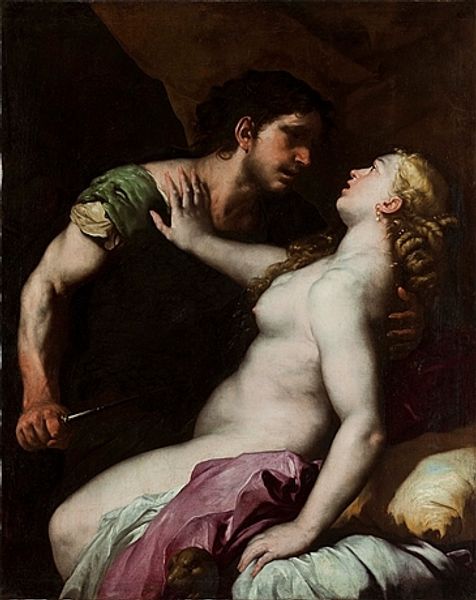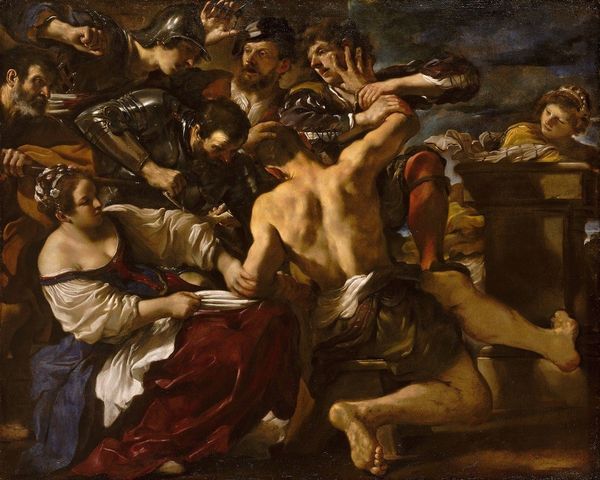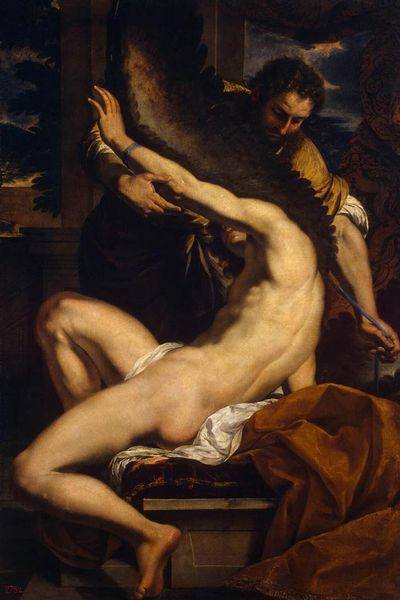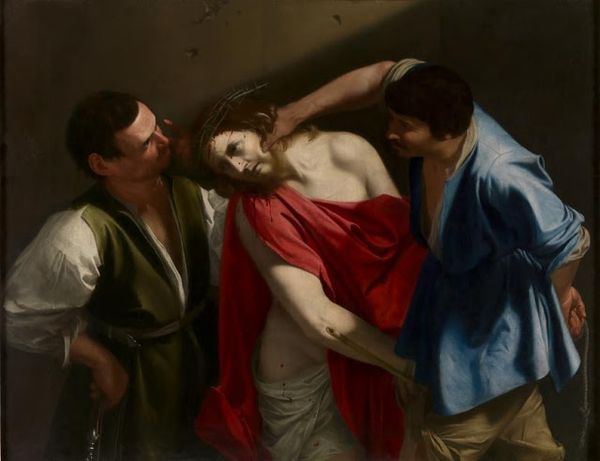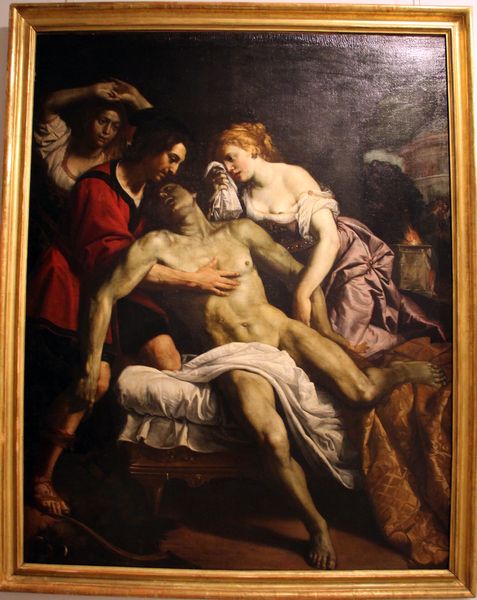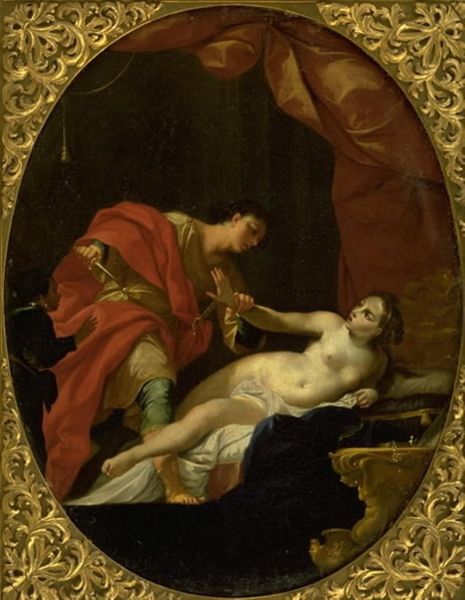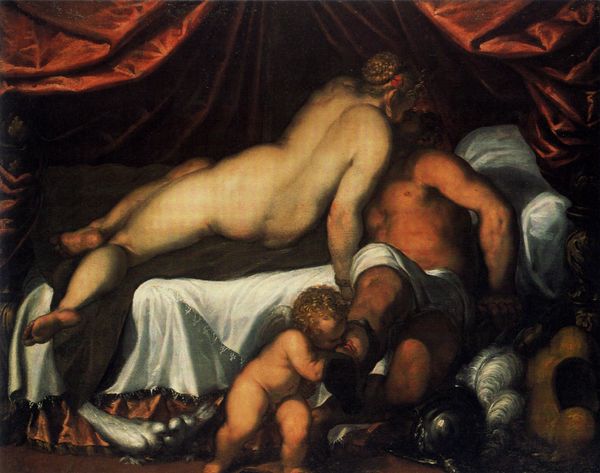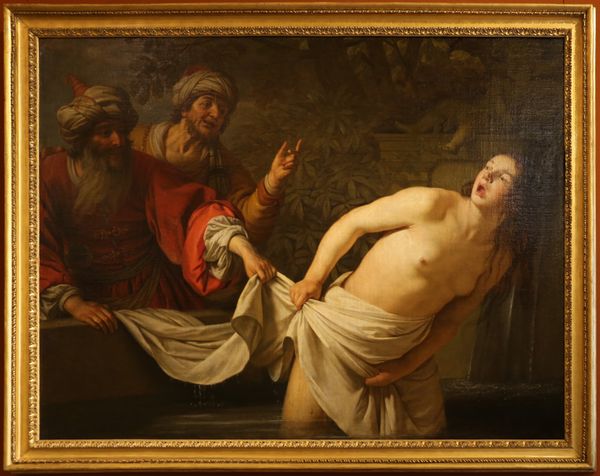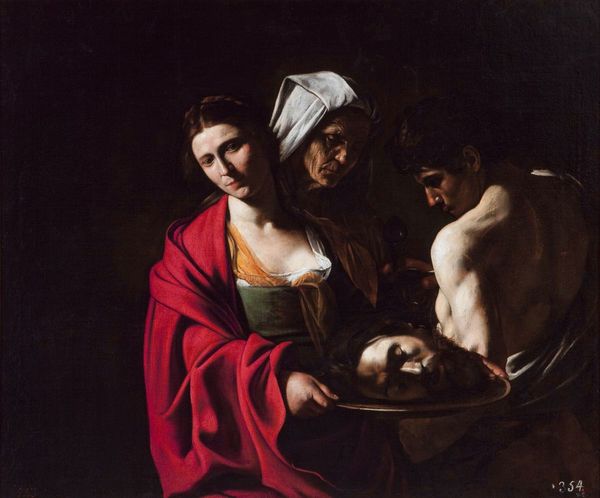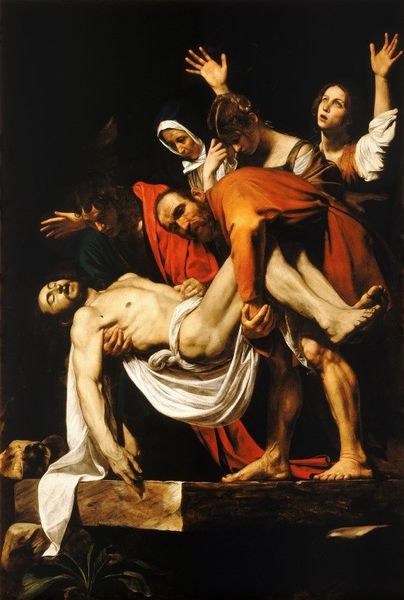
painting, oil-paint
#
narrative-art
#
baroque
#
painting
#
oil-paint
#
figuration
#
chiaroscuro
#
history-painting
#
italian-renaissance
#
erotic-art
#
realism
Copyright: Public Domain: Artvee
Caravaggio painted this representation of Judith beheading Holofernes in Italy, at the turn of the 17th century. The bible story tells of Judith, who saves her people by seducing and then executing the general of the enemy army. Caravaggio's painting captures the moment of the beheading in brutal detail. In doing so, it departs from the established conventions of Renaissance art. The image seems to embody a challenge to the social and institutional norms of its time. In the late 16th century, the Catholic Church faced the rise of Protestantism and responded with its own reformation. The Church aimed to address corruption and reinforce its authority, and to do so, it sponsored art that would clearly and directly convey religious messages. We can research the Counter-Reformation, together with the biography of Caravaggio, to learn more about the context that shaped this painting.
Comments
No comments
Be the first to comment and join the conversation on the ultimate creative platform.
